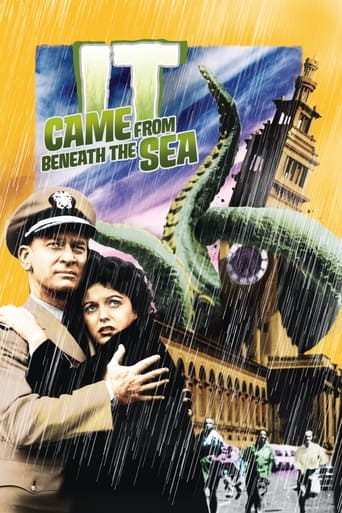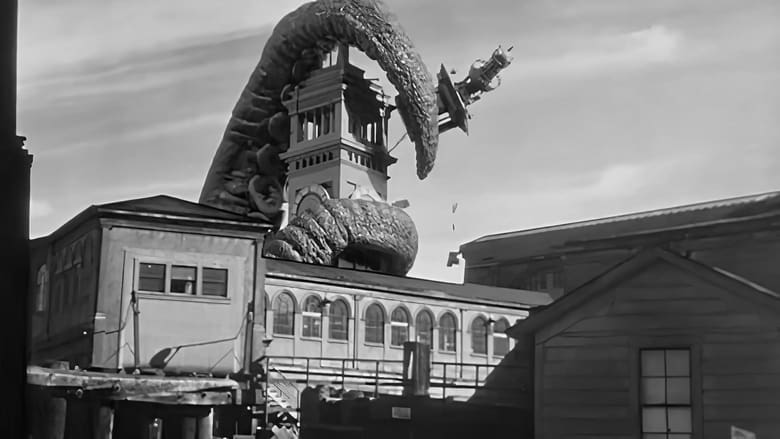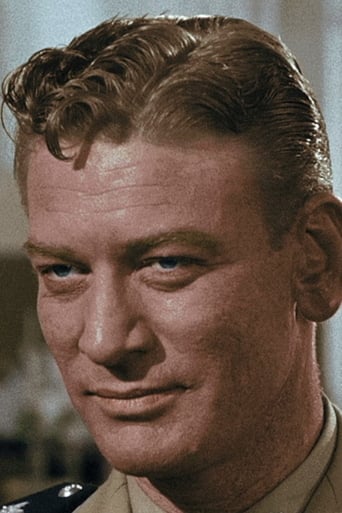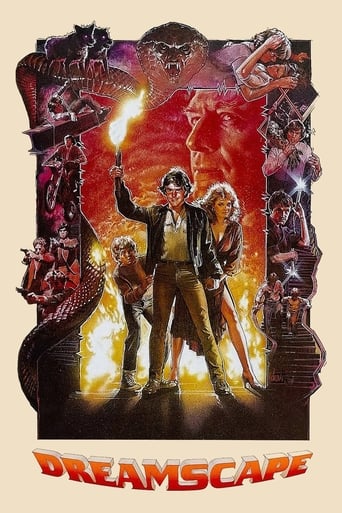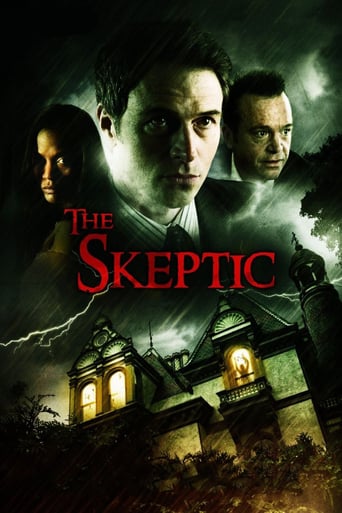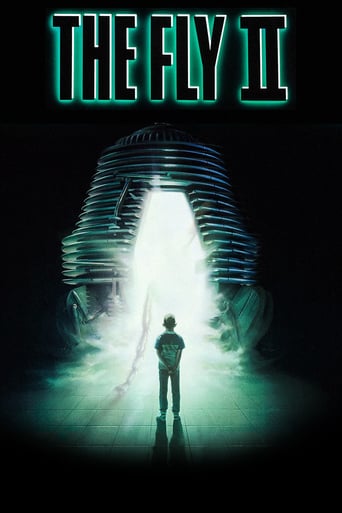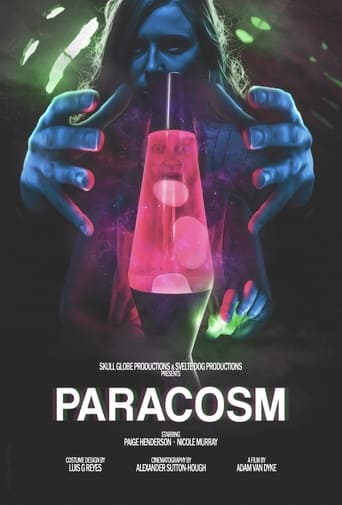It Came from Beneath the Sea (1955)
A giant octopus, whose feeding habits have been affected by radiation from H-Bomb tests, rises from the Mindanao Deep to terrorize the California Coast.
Watch Trailer
Cast


Similar titles
Reviews
I've heard of many of the classic monster movies from the 1950s, this was one of those, I knew the monster featuring and some of what to expect, I just hoped for a good film. Basically a nuclear submarine captained by Commander Pete Mathews (The Thing from Another World's Kenneth Tobey) is caught by something strange beneath the sea, but it is able to escape and return to Pearl Harbor. Tissue from an unknown sea creature is discovered in the submarine's dive planes, prominent marine scientific biologists Professor Lesley Joyce (Faith Domergue) and Dr. John Carter (Donald Curtis) are brought in to investigate. They conclude that the submarine was attacked by a gigantic radioactive octopus, mutated by bombing tests in the Pacific Ocean, the military authorities dismiss this explanation, but then other ships are being pulled down and sunk by the giant octopus. Navy Command realise there really is a menace in the ocean, so Mathews teams up with Carter and Joyce to find a way to stop the monster, during this time Mathews starts a love affair with Joyce. Soon the monster reappears, coming out of the waters and attacking San Francisco, after the Golden Gate Bridge is abandoned, flame throwers force the creature back into the open water, then a torpedo is fired and detonated, completely destroying the giant cephalopod. Also starring Ian Keith as Admiral Burns, Dean Maddox Jr. as Admiral Adam Norman, Chuck Griffiths as Lieutenant Griff, Harry Lauter as Deputy Bill Nash and Richard W. Peterson as Captain Stacy. It was common in those days to have films about careless atomic testing creating mutant monsters, you ignore any little love story going on in the background, the main focus is the giant tentacles rampaging cities, the octopus effects are the work of the genius stop-motion animator Ray Harryhausen, it is camp and a little silly, but it is a fairly fun classic science-fiction giant monster B-movie. Worth watching!
Faith Domergue had a cold beauty that made her suitable as female scientist Professor Leslie Joyce. The stereotype of the cold, hard scientist whose intellect does not allow itself to be swayed by mere sentiment and feeling was especially prevalent in the old science fiction movies, and thus a beautiful female scientist constituted a special challenge for a macho man, used to having his way with ordinary women. In this movie, said macho man is Commander Pete Mathews.A lot of old movies are sexist by twenty-first century standards, but science fiction movies from the 1950s, with their inevitable beautiful female scientists, often have a feminist theme in them, pushing back against that sexism. But the message tends to be mixed, with the movie expressing a sexist attitude one minute and a feminist attitude the next. No more is this so than in "It Came from Beneath the Sea."Joyce's colleague is Dr. John Carter. They have both been called in to investigate a hunk of mysterious substance that got caught in the diving plane of Mathews' submarine. When Joyce definitively determines the nature of the substance, a piece of giant octopus, Carter kisses her on the cheek, and then she nestles in his arms as Mathews calls Naval Intelligence. If they were actually involved romantically, this would not be so strange. But they are not. As a result, we get that strange mixture of feminism and sexism: on the one hand, she is the expert in her field and has found the solution; on the other hand, she is a pretty girl that men just naturally kiss and hold in their arms, even when that man is a colleague in a professional setting.On their last night in Pearl Harbor, they all decide to have dinner together at a restaurant. After Mathews and Joyce dance for a while, we think that Mathews is going to try to kiss her, but she moves her head forward and kisses him instead and then puts her arms around him. So, contrary to appearances, she is a sexually aggressive woman. Then they return to the table and have their meal. When Mathews realizes that Joyce still intends to go to Cairo to study the Red Sea with Carter, he is shocked. Presumably, he thought that since they kissed, she was going to give up all this foolishness about a career, marry him, and have babies. He leaves in a huff.Their plans to go to Cairo, however, are foiled by the disappearance of a tramp steamer. In order to get the facts, a doctor examines the survivors. After the first survivor tells his story, the doctor decides he needs the care of a psychiatrist. The other three survivors, not wanting to be committed to a mental institution, deny having seen anything. They are given lie-detector tests, which show that they are lying about not seeing anything. And then the first survivor recants his story so that he can be released from the infirmary. Mathews and the other officers are exasperated and just don't understand why they can't get the truth out of these guys.Professor Joyce rises to the occasion. Removing her coat so as to expose a little more of her soft, warm flesh, she tells the officers she will talk to the first survivor when he is released, and then contrives to be alone with him in a room. Using her womanly wiles—giving him sexy looks, touching his hand, showing a little leg—she gets the man to admit he saw the sea monster, which the officers hear through the intercom. So, you see, that's why we need female scientists, because they have special ways of getting to the truth.Mathews and Joyce decide to investigate reports of poor fishing along the northwest coast, because it may be that the octopus has been eating all the fish. They spot what might be called an octopus footprint on the beach and they send for Carter. When Carter arrives with the deputy sheriff, Mathews asks Carter to help him persuade Joyce to leave and let the Navy take over the job. When Carter asks what Joyce has to say about that, Mathews responds, "What's the difference what she says?" At that point, Carter proceeds to lecture Mathews about women: "There's a whole new breed who feel they're just as smart and just as courageous as men. And they are. They don't like to be overprotected. They don't like to have their initiative taken away from them."Joyce picks up the argument: "A, you'd want me to miss the opportunity to see this specimen, one that may never come again. B, you'd be making up my mind for me. And C, I not only don't like being pushed around, but you underestimate my ability to help in a crisis." Carter says that he is entirely on her side, as she nestles into the arm her puts around her. Mathews concedes to having lost the argument.Suddenly, the octopus appears and kills the deputy, causing Joyce to scream like a girl.The octopus starts wreaking havoc on San Francisco, Mathews and Carter take turns saving each other's lives, during which Joyce screams again, finding solace first in Carter's arms and then Mathews', until at last the octopus is killed.They have dinner again. Mathews, saying that women can change, says he wants Joyce to marry him and start a family. She says she hasn't time for that and offers to collaborate with him on a book, "How to Catch a Sea Beast." Mathews tells Carter he is right about this new breed of women.
Unfortunately, time has not been in the least bit kind to this creaky, badly-dated Sci-Fi/Monster Flick from 1955.Rugged Submarine commander Pete Mathews, along with diligent scientists Lesley Joyce and John Carter, battle an understandably peed-off monster-octopus who has been driven up from the darkest depths of the ocean by an H-Bomb explosion.In search of non-contaminated food, this tentacled tyrant of the sea counts among its victims a fishing trawler and its passengers, a family sunning at the beach, several San Francisco skyscrapers, and even the Golden Gate Bridge.With a daring attempt to destroy the monster, while at the same time trying to save themselves, IT CAME FROM BENEATH THE SEA features some incredibly fake-looking "back-projection" visual effects and a corny, out-of-place romance that somehow transpires between Commander Pete and Scientist Lesley Joyce. -
When World War II ended, the atomic age had begun. Major corporations saw the power nuclear energy could provide, so the industrialization of factories and transportation started with a boom. But along with this, came some nasty side effects thanks to the radiation nuclear energy gave off. So to lightly emphasize the issue and capitalize on the topic, a set of films began to be created. Out of this bunch, was the most popular, Godzilla (1954). But there are others that have credibility to them as well and just aren't recognized for that talent. This is one of them.After a strange run in with a mysterious ocean creature, an American Sub Commander Pete Matthews (Kenneth Tobey), decides to find out for himself what he possibly ran into. The plot device - after series of nuclear bombing tests in the west Pacific Ocean, the radiation mutated a gentle sea octopus into a human eating, town-destroying monster. So it is obvious that there really isn't much else. The writer, George Worthing Yates did his best with the screenplay. He's also the writer of the classic sci-fi film Them! (1954). But what Yates didn't accomplish here is telling its audience who is with who. Commander Matthews befriends two scientists - Prof. Joyce (Faith Domergue) & Dr. Carter (Donald Curtis). Both men seem to be attracted to Prof. Joyce but it's never explained to whether who's dating the girl. Why is it important? Because the topic of romance is touched up on right when the characters meet, so apparently there was a story to be told - it just wasn't evidently told to the audience. Almost like it was swept under the rug. But if that was the case, why bring it up to begin with? There's also the fact of a reporter bringing up a good point on the octopus. He asks if there are anymore and the consensus was that no one knew. Well gee, that's kind of important because I'm pretty sure no one wants to rebuild a city more than once in a year! That's where Mr. Yates fails at his writing. Anything else is acceptable though because it is science fiction, so any explanation can be made to why the octopus became bloodthirsty.The actors themselves give good shows. Kenneth Tobey was also in The Thing from Another world (1951) and more famously Airplane! (1980). Faith Domergue is good as the female lead, she definitely has the appeal of 1950's actress. Donald Curtis is also another actor who would later play in The Ten Commandments (1956). Its also fairly clear that his film didn't a have a good budget for its time, but for what is put on screen, it's not that bad. I'll admit there are few scenes where it's like someone is standing in front of a green screen but again, that might've been all they had for that scene and it wasn't that often either.Mischa Bakaleinikoff the composer to film's score wasn't bad either. It had all the right tunes for various scenes but it was also not the strongest. It definitely did its job that's for sure. But if there is one thing to really admire with this movie is Ray Harryhausen's master techniques in creature / visual effects. Apparently, the budget was so small, Harryhausen had to cut the octopus' legs down to six, not eight. Quite honestly, he hid that so well, I didn't even notice the difference. The miniature models were also well done too. Anything that has Harryhausen listed in the credits has great quality and that should be one of the main reasons to see this mid 1950's sci-fi monster movie.It may be lacking in a convincing story and character development, but the actors perform well anyway. The main attraction though, is Ray Harryhausen's clay animation of the enormous octopus.

